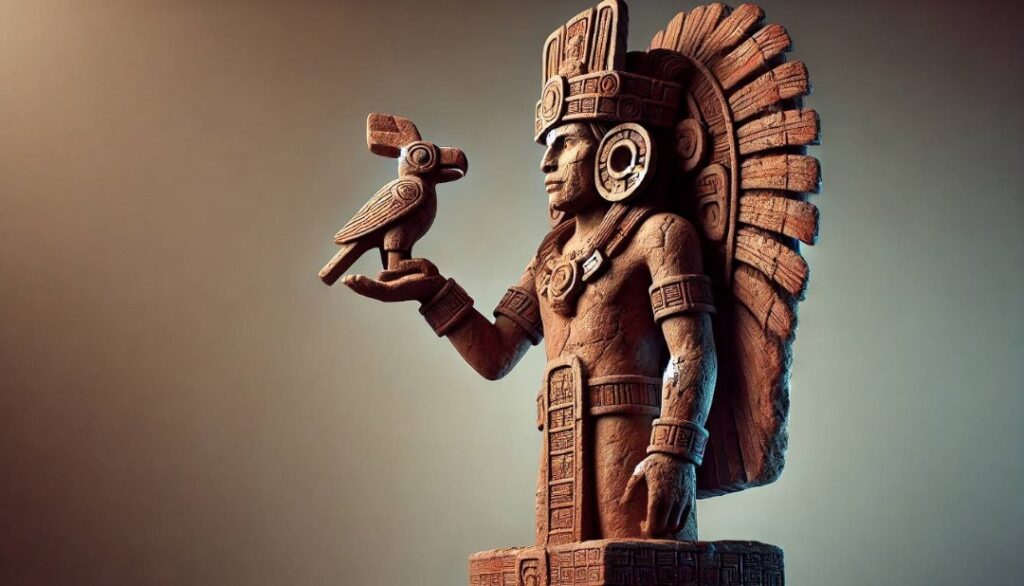Xipe Totec was one of the major gods that the Aztecs worshiped. His name can be interpreted as “Mr. Flayed”. Despite this grim title Aztecs believed that he helped crops grow. During annual Tlacaxipehualiztli celebration to honor him, hundreds of people were sacrificed.
Myths and Representations
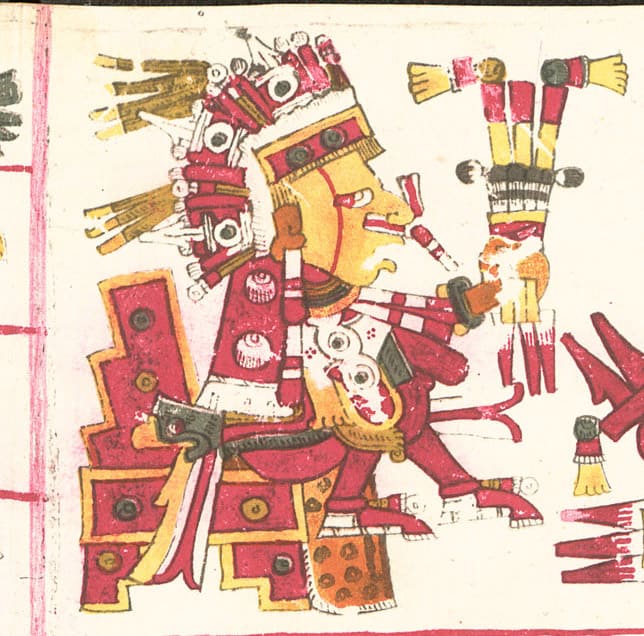
Xipe Totec was the Aztec god of agriculture, rebirth, and the changing of the seasons. Many Aztecs loved him due to his association with having a plentiful harvest and rebirth. Goldsmiths worshiped him due to his connection to abundance. Yet, he also contributed to death and disease. They suffered frequent human sacrifices. To honor him Aztec priests would flay captured victims and then wear their skin.
He is one of the children of the Ometeotl, the god of duality. His brothers are Tezcatlipoca, Huitzilopochtli, and Quetzalcoatl. Together, these deities embodied the primordial principles of creation. Aztecs believed that they were the givers of life and the creation of the universe.
In contrast to his brothers, his figure is not so deeply rooted in mythology. One of them is how he would peel the skin off his own body to feed the Aztec people. Another is how he was one of the gods that jumped into Teotihuacan’s raging fire. He made this sacrifice to make the sun move across the sky.
His divine figure manifests itself as a human being wrapped in a mantle of human skin, recently stripped of its owner. Most depictions of this extra skin are seen hanging from the god’s wrists and ankles. These flayed skins were often painted yellow, tan, or gold to symbolize abundance. In contrast, his own skin was painted red. There can be dark, vertical stripes along his chin, forehead, and across his eyes. His ears are perforated.
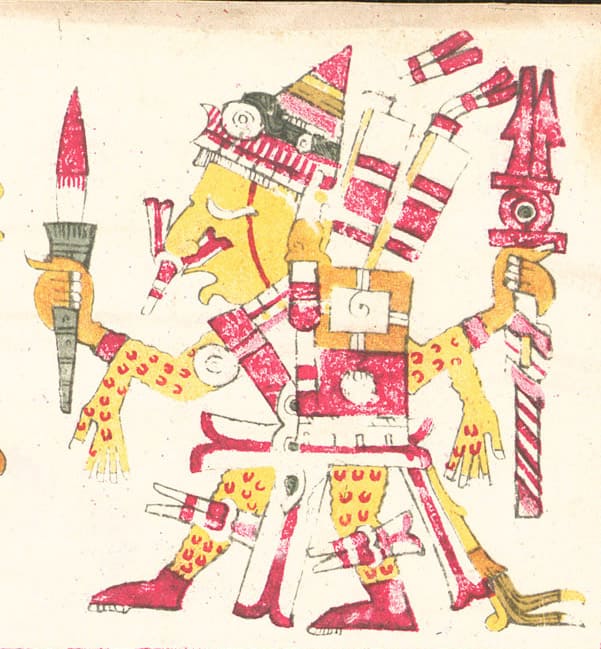
Statues do not have Xipe Totec wearing many clothes. Some drawings depict him wearing a headdress and a ceremonial garb. The color of these items were vibrant yellow and reds. It is common to show him with one hand holding a sharp, ceremonial weapon and the other a shield. In some cases, he was holding a container filled with grain.
On rare occasions, he is shown with a man on a pedestal. This man has an incision across the center of his chest, a mark used to signify that his heart has been extracted. Removing the heart and flaying a victim was a common way to pay homage to this god.
Festival of Xipe Totec
Tlacaxipehualiztli was the annual festival to honor Xipe Totec. The celebration lasted twenty days. It began on the spring equinox before the rainy season started. To start this event, recently captured slaves were dressed as this god. Turned into human offerings, the slaves were thrown into the arena to perish in bloody combat with no hope of escape.
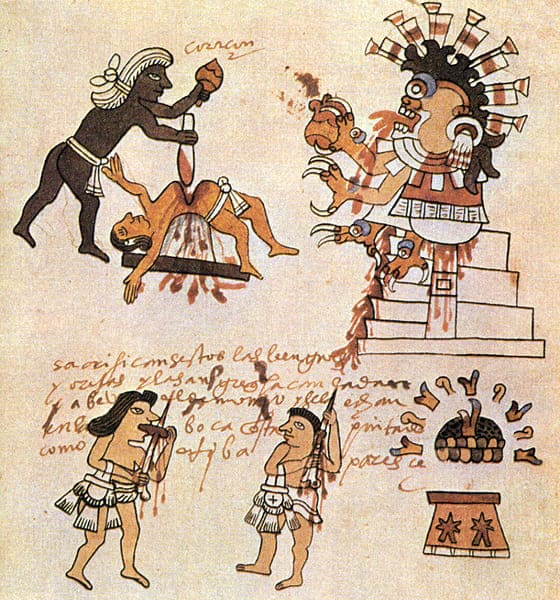
When the battle finished, the Aztec warriors would run throughout the city. They would barge into houses and demand gifts from citizens. Common gifts were corn and gold jewelry. These tributes showed their love and were thought to bring good fortune. If a family did not have a proper gift ready for the Aztec warriors they were punished.
The following day two groups of men would form. One would represent their god and would wear the skins of the men that were killed the day before. The other group would be composed of skilled Aztec warriors.They would be dressed in warrior garb. For hours these two parties would mock battle each other.
During Tlacaxipehualiztli goldsmiths would hold a feast called Yopico. A local leader, also called a satrap, would wear one of the flayed skins from a killed captive. He would also be adorned with gold jewelry, a crown, and a gold shield. Brightly colored feathers and other symbolic items were worn to make him appear as their god.
All these items were provided by the goldsmiths as a tribute. They would then offer the satrap food which consisted of corn and fruit. Yopico ended with a large dance and war exercises
The remainder of the twenty-day celebration, there were many sacrifices and mock battles. The captives had their chests ripped open, exposing their beating hearts and then cutting out their lives. They were flayed in such a way that it would remain together as one piece. Priests would wear these skins for the entirety of the holiday. They would perform fertility rituals in the skins. Warriors would also wear them and partake in skirmishes across the city of Tenochtitlan.
When Tlacaxipehualiztli ended all the flayed skins were collected. They were stored beneath the city’s temple in special containers. These containers would hold in the horrid smell.
Human Sacrifice
The Aztec people sacrificed many people to honor Xipe Totec. These sacrifices were an annual ritual. A substantial amount happened during Tlacaxipehualiztli. Slaves were primarily the ones who were chosen to be killed. Due to this gods association with goldsmiths, people who stole gold were also sacrificed.
While many forms of sacrifice existed, the Aztecs chose two forms above all others to pay homage. They were known as gladiator sacrifice and arrow sacrifice.
Gladiator sacrifices were when captives were forced to fight each other or an Aztec warrior. It was common practice to give the victim a mock weapon. Their waist or ankle would be tied to a large stone so they could not run away. Their weapon was made of wood and feathers. Captives rarely survived going up against an Aztec warrior with real weapons and armor.
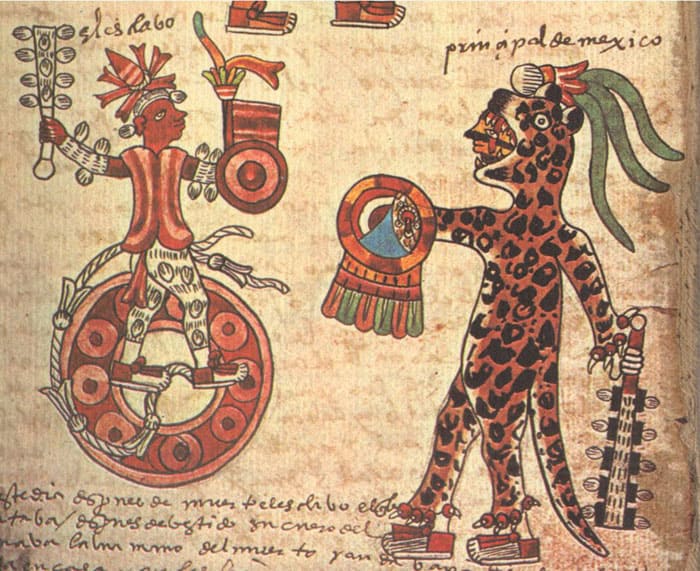
Arrow sacrifices happened during periods of drought or before the rainy season. They promoted an abundant rainfall. A slave would be tied with their limbs stretched outwards onto a wooden frame. Aztec warriors would shoot them full of arrows and allow their blood to spill onto the ground. This symbolized the rain they were praying for. When the captive was finished bleeding their heart was removed and his skin flayed.
Facts about Xipe Totec
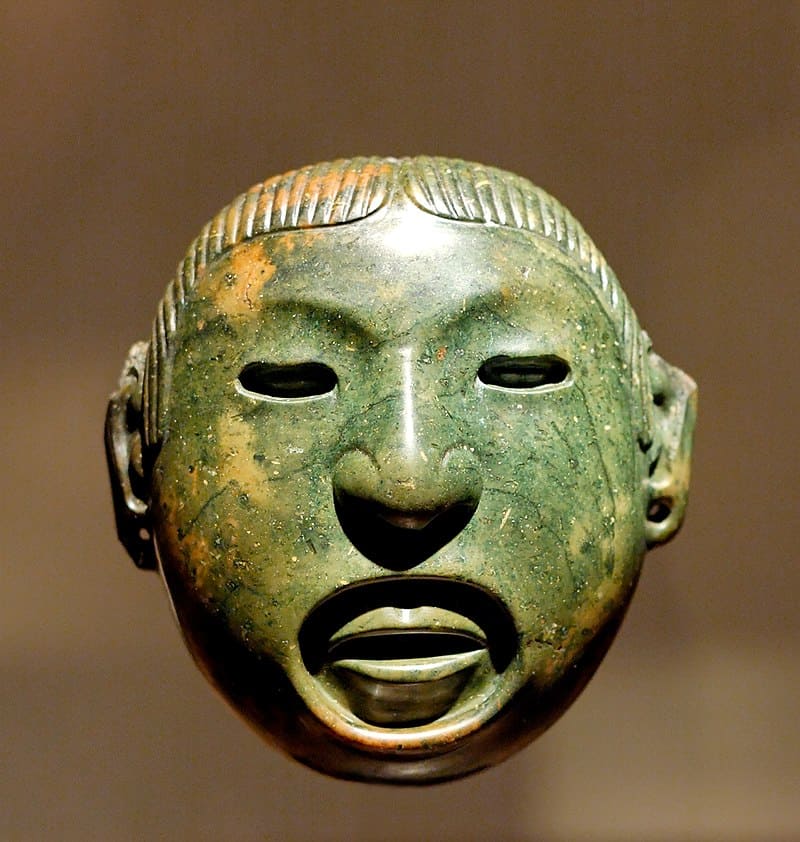
- His name can be translated to mean “Our Lord the Flayed One”.
- He had several other names including Tlatlauhca, Tlatlauhqui Tezcatlipoca, and Youalahuan.
- The Aztecs worshiped him in central Mexico. However, his influence stretched as far as the Yucatán Peninsula.
vgf - Xipe Totec is the divinity related to agriculture, rebirth, gold artisans, diseases, sacrifices and seasonal variations.
- Depictions of him show him wearing a flayed skin and holding a weapon, a shield, or a jug filled with grain.
- He is usually painted yellow or gold to symbolize abundance.
- A festival was held in honor of this god called Tlacaxipehualiztli.
- During Tlacaxipehualiztli hundreds of captives were sacrificed. Their bodies were then flayed and worn for the rest of the holiday.
- The goldsmiths seized the thieves to sacrifice them.
- He was a descendant of the dual deity Ometeotl.
- He was also the brother of Tezcatlipoca, Huitzilopochtli, and Quetzalcoatl.
- It was believed that he was one of the gods that sacrificed himself to make the sun travel across the sky.
Interesting article: Montezuma II: The Emperor who faced the fall of the Aztec Empire

